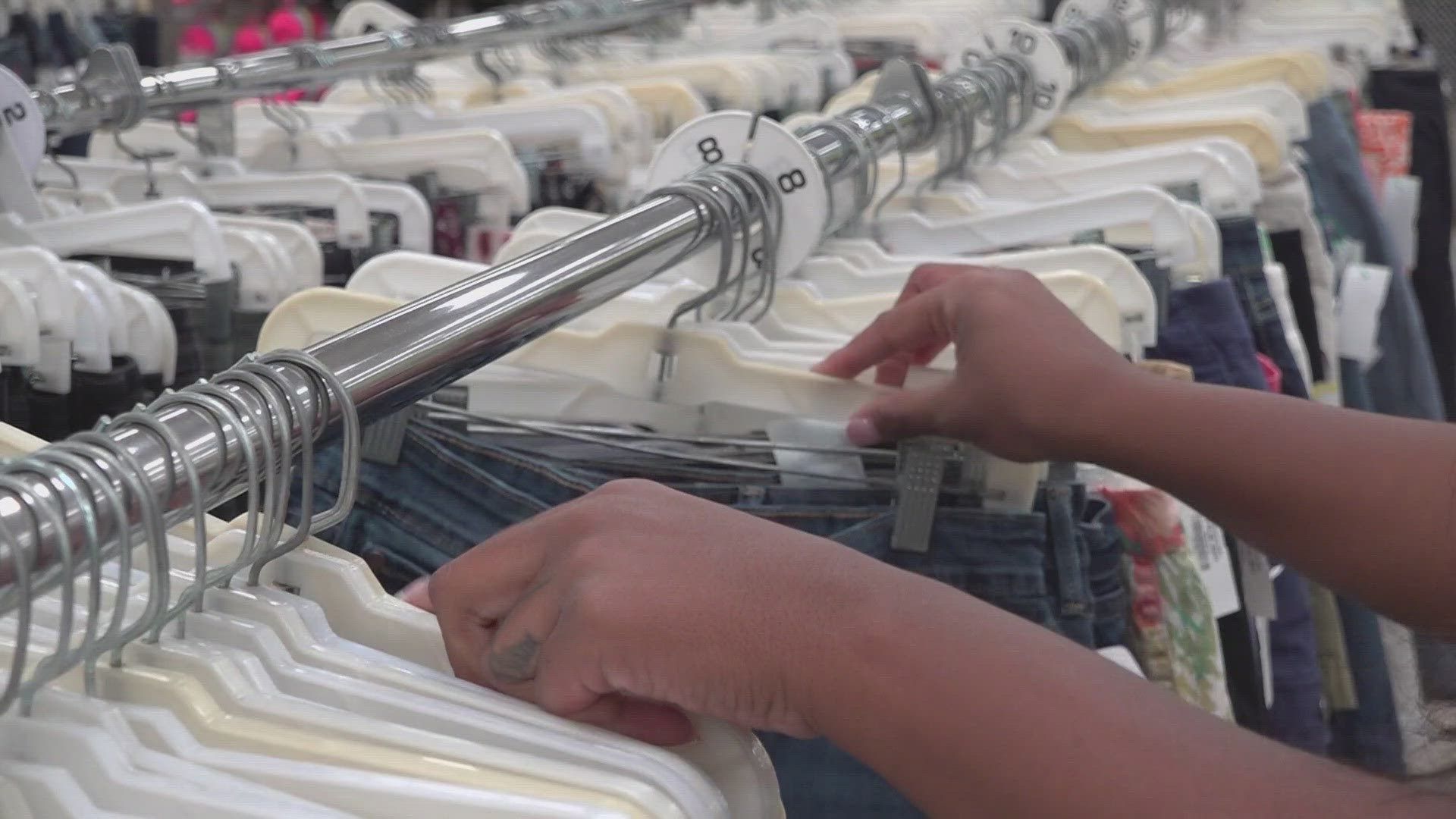FALMOUTH, Maine — With school starting back up in a little less than a month, many people are looking for ways to get the best deals on clothing items.
Some shoppers are planning to save money by purchasing reused items from thrift stores, but Goodwill Northern New England Retail Marketing and Communications Specialist Morgan Sewall said thrift shopping saves more than just money.
"The fast fashion industry is one of the top polluters contributing to climate change in the world right now," Sewall said. "So, any chance that we have to combat that, fight that, and highlight the second-hand and just educate about that is a win for us and just something that we're really excited about."
According to the United Nations Environment Program (UNEP), the fast fashion industry is the second biggest consumer of water and is responsible for 2 to 8 percent of global carbon emissions.
Other data indicate 92 million tons of textile and clothing waste end up in landfills every year.
For frequent thrifter Sophie Koutalakis, who is very conscious of the companies she consumes from, contributing to the "fast fashion" trends is not an option.
"They use cheap labor, and the price may be cheaper, but it's at the expense of their workers," Koutalakis said.
Koutalakis explained fast fashion brands often underpay their workers, practicing poor mass manufacturing ethics.
In 2022, the U.S. Department of Labor (DOL) Wage and Hour Division’s southern California offices investigated a slew of contractors in the region’s garment industry.
The results of the department's investigation showed that 80 percent of the contractors in the region were actively violating minimum wage and overtime laws.
The investigation prompted the recovery of nearly $900,000 in back wages and damages.
The U.S. DOL detailed that some contractors were paying employees $1.58 per hour, despite the state minimum wage being set at $15.
Koutalakis said she has no problem finding fashionable and unique items at Goodwill and other thrift stores.
"I like experimenting with new styles. I wear all kinds of different things. So, that's where thrifting comes in handy," she said. "I thrift all the time. I think half of my wardrobe now is all thrifted."
Koutalakis said buying second-hand means you can spend less to buy more.
"On average, I'll come out with at least five or six items, and it will be in the range of $20-30 depending on what those items are," Koutalakis said. "And that would be like two items at a regular store. Maybe even just one depending on where you're shopping and the quality of the clothing."
In light of National Thrift Shop Day, which is on Aug. 17, Sewall said she encourages everyone to research the brands they support.
"Go on their website and see if you can kind of learn a little bit more about where they make their clothes and how that process works and how they're treating their employees and what that whole supply chain looks like," Sewall said. "If there's not a lot of information about that you have to start to question, 'Why? Why are they not being transparent about that?'"

